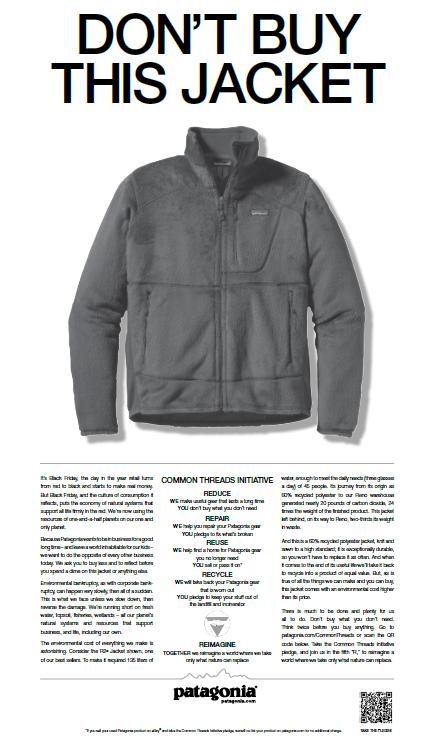Eco-friendly companies set example by supporting conservation efforts
Companies make environmental sustainability part of their mission
October 20, 2017
Our student body is undoubtedly fashionable and trendy.
It’s not uncommon to see girls wearing Lululemon leggings and white Stan Smiths, or guys wearing colored khaki shorts and a Vineyard Vines shirt.
Different trends dominate fashion culture, but perhaps the most important trend is being overlooked: eco-friendly clothes.
Awareness of the importance of a healthy environment has grown within the past few decades, with well-known organizations such as the Center for Marine Conservation and Greenpeace USA leading the charge to a greener future.
However, it comes as a surprise to many that clothing brands are also making significant contributions to benefit the environment.
Since 1985, Patagonia, a popular outdoor clothing brand, has been a part of the growing global movement 1% For the Planet.
They, along with 1,000 other brands, donate 1 percent of their annual sales to preferred groups from 3,000 approved environment organizations.
Patagonia specifically has given over $74 million in cash and in-kind donations through the years to support domestic and international grassroots environmental groups.
“Brands like Patagonia and Northface should give back [to the Earth] because they deal with the outdoors, and you would think that they would have some appreciation for the environment,” said junior Grace Sheehan.
Patagonia is hardly alone in incorporating eco-friendly into their sales. Amour Vert provides another example of a brand determined to do eco-good.
The fashion-forward women’s clothing brand can be seen on the racks of Nordstrom promoting an image of sustainability.
As part of their Plant a T(r)EE program, they pledged to plant a tree in the U.S. every time a t-shirt is sold. To date, they have planted over 150,000 trees.
“I think it’s great how certain clothing companies are recognizing the importance of helping our environment. They have the resources to have an impact and spread awareness, and taking part in specific movements like Plant a T(r)EE makes their company more appealing,” said junior Alex Kotaba.
Perhaps the brand that is best known for giving back to the environment is the shoe company TOMS. They manufacture shoes made of sustainable and vegan materials such as hemp, organic cotton, and recycled polyester.
The shoe boxes are also made from 80 percent recycled post-consumer waste and printed with soy ink.
Beyond sustainability, through their One for One movement, they have given 75 million pairs of new shoes to children, 450,000 weeks of safe water to people in seven different countries through sustainable water sources, and 500 eye examinations to restore sight for those in need, according to their website.
Despite the indisputable benefits these brands have to the Earth, their messages promoting a healthier environment are still obscure.
“I just remember that a girl did a project on [TOMS] in seventh grade, and it was about how they give their money to foundations every year,” said senior Joe Bullard.
It does not make sense that brands such as Patagonia and the Northface have a large number of customers, yet efforts to contribute to the health of our world are not widely recognized.
“[Eco-friendly clothing brands] are not as promoted, and certain brands just dominate the market. Most people have brand loyalty and don’t want to switch over unless the other brand has a much better product or looks a lot better,” said senior Brian Kerwin.
The difference that could be made if people were more aware and receptive to environmentally friendly clothing companies is significant. Consumers can control how many trees are planted or how many sustainable water sources are built, leaving a lasting impact on the world.
“If everyone, not just a select few, were to purchase from brands that help the environment, then there could definitely be a lasting impact,” said Kerwin.











































